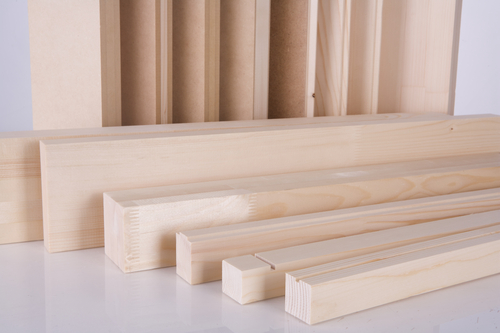What is Softwood

Softwoods are generally light, open-grained woods which are used for a wide range of applications inside the home. The next time you visit George Hill Timber, take a look around and you’ll notice a wide variety of softwood, all of which are suitable for building furniture, home renovations and much more.
 Softwood Boards[/caption]
Although their name would suggest that softwoods are particularly soft varieties of wood, this is not necessarily the case. Certain softwoods – like yew - are stronger and more durable than others, just as certain hardwoods – like poplar or balsa – are comparatively soft. In fact, the names softwood and hardwood
are references to the seeds of the tree, with softwood seeds uncovered by usually protected by cones, and hardwood seeds usually dropping inside the protective casing of a nut or piece of fruit.
Softwood Boards[/caption]
Although their name would suggest that softwoods are particularly soft varieties of wood, this is not necessarily the case. Certain softwoods – like yew - are stronger and more durable than others, just as certain hardwoods – like poplar or balsa – are comparatively soft. In fact, the names softwood and hardwood
are references to the seeds of the tree, with softwood seeds uncovered by usually protected by cones, and hardwood seeds usually dropping inside the protective casing of a nut or piece of fruit.
"Cedars, pines and firs, all of which grow extensively across the Northern Hemisphere
Softwood is a collective term for the wood which is produced by coniferous trees, almost all of which are evergreen. Conifers are cone-bearing trees, as opposed to the more leafy deciduous trees like oak and maple, both of which produce hardwoods. Some of the most common trees for producing softwood are cedars, pines and firs, all of which grow extensively across the Northern Hemisphere. [caption id="attachment_2644" align="alignright" width="300"] Softwood Boards[/caption]
Although their name would suggest that softwoods are particularly soft varieties of wood, this is not necessarily the case. Certain softwoods – like yew - are stronger and more durable than others, just as certain hardwoods – like poplar or balsa – are comparatively soft. In fact, the names softwood and hardwood
are references to the seeds of the tree, with softwood seeds uncovered by usually protected by cones, and hardwood seeds usually dropping inside the protective casing of a nut or piece of fruit.
Softwood Boards[/caption]
Although their name would suggest that softwoods are particularly soft varieties of wood, this is not necessarily the case. Certain softwoods – like yew - are stronger and more durable than others, just as certain hardwoods – like poplar or balsa – are comparatively soft. In fact, the names softwood and hardwood
are references to the seeds of the tree, with softwood seeds uncovered by usually protected by cones, and hardwood seeds usually dropping inside the protective casing of a nut or piece of fruit.
"Softwoods are less expensive"
One of the main distinctions between softwoods and hardwoods is their speed of growth. Softwood trees reach maturity at a far quicker rate than hardwoods, making them an ideal choice for many DIY applications. The quicker rate of growth means that softwoods are less expensive than hardwoods, but this is also a result of their straighter trunks - which can be more easily cut into straight planks or sheets."Used for indoor construction or home improvement projects"
Softwoods are almost exclusively used for indoor construction or home improvement projects. Softwoods are far less durable than hardwoods like oak and elm, meaning they are likely to become eroded or damaged if used outdoors. Constant exposure to wind and rain can not only split the open-grained wood, but less than ideal water permeability can also cause the warping or distorting of the wood. Softwoods can also be responsive to any changes in temperature. Before any cutting or construction, softwood should be left for several days to acclimatise to the temperature and humidity of the room in which the final product will be placed. A failure to do so could result in warping and bending of the wood, potentially requiring new measurements, extra cutting and sanding, or even new pieces of wood."Softwood is often used to build furniture"
Softwood is often used to build furniture, usually with a more attractive hardwood covering for decorative purposes. However, applying an oil or stain finish directly to a softwood surface is not advisable. The glaze will become patchy or blotchy due to the resinous nature of the wood, leaving a less attractive finish. A thick coat of paint is instead recommended for any exposed softwood surfaces, providing both extra protection and an attractive coat. Have you browsed through the planed softwoods available for purchase from the George Hill Timber store? What home improvement projects have you completed with the help of softwoods?
January 16, 2014

